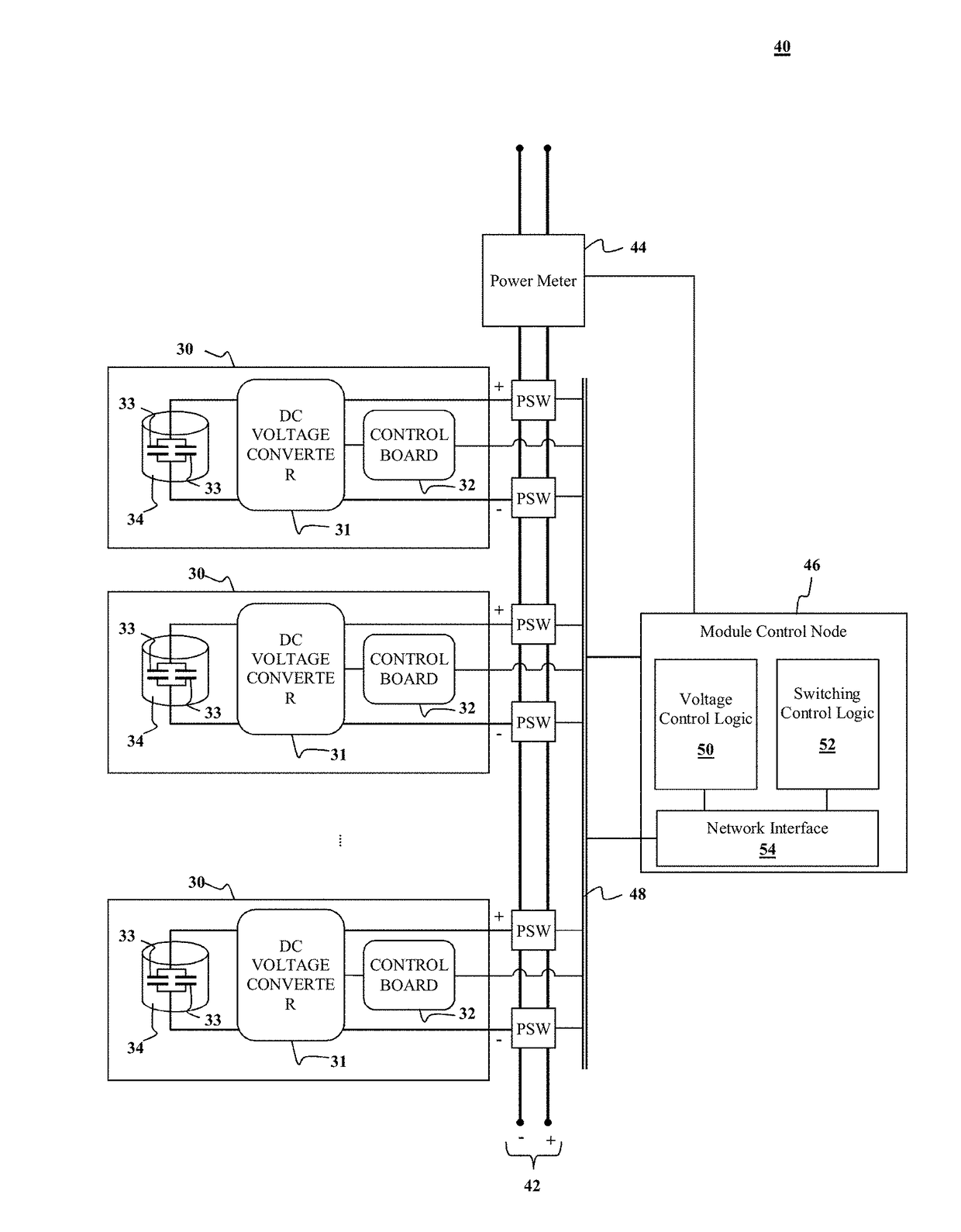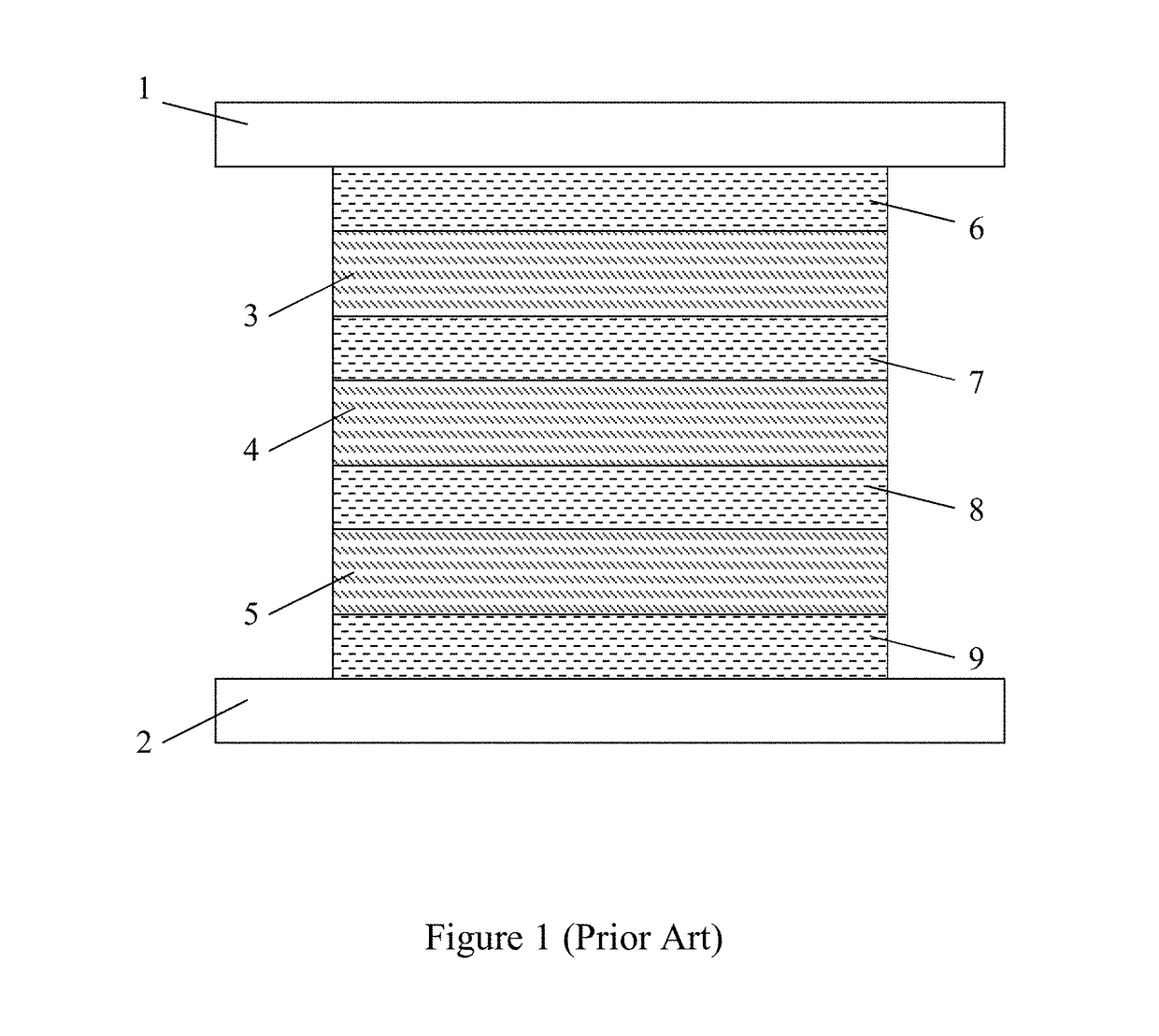Capacitor and method of production thereof
a technology of capacitors and capacitors, applied in the direction of wound capacitors, fixed capacitor details, fixed capacitors, etc., can solve the problems of local breakdown, electric field strength, and breakage voltag
- Summary
- Abstract
- Description
- Claims
- Application Information
AI Technical Summary
Benefits of technology
Problems solved by technology
Method used
Image
Examples
example 1
[0060]Example 1 describes a capacitor comprising a dielectric layer formed with the solid molecular material of lamellar structure as shown in FIG. 5.
[0061]The capacitor comprises two electrodes 13 and 14, the dielectric layer 15 which comprises the conductive anisometric stacks 12 formed with the polarizable anisometric cores, and isotropic insulating sublayers 16. Polyaniline (PANI) is used as the polarizable anisometric core, and fluorinated alkyl substituents are used as the insulating substituents. The conductive anisometric stacks formed with polyaniline (PANI) have the dielectric permittivity εcor equal to 10,000. Thickness of each insulating sublayers formed by the substituents is approximately dins=2 nm, and number of the insulating sublayers nins is equal to 500. Electrodes 13 and 14 are made of copper. Dielectric permittivity of the insulating sublayers is equal to 2.2 (i.e. εins=2.2) and its breakdown voltage is equal to 1 V / nm. The working voltage of the capacitor does ...
PUM
| Property | Measurement | Unit |
|---|---|---|
| thickness | aaaaa | aaaaa |
| thickness | aaaaa | aaaaa |
| dielectric | aaaaa | aaaaa |
Abstract
Description
Claims
Application Information
 Login to View More
Login to View More - R&D
- Intellectual Property
- Life Sciences
- Materials
- Tech Scout
- Unparalleled Data Quality
- Higher Quality Content
- 60% Fewer Hallucinations
Browse by: Latest US Patents, China's latest patents, Technical Efficacy Thesaurus, Application Domain, Technology Topic, Popular Technical Reports.
© 2025 PatSnap. All rights reserved.Legal|Privacy policy|Modern Slavery Act Transparency Statement|Sitemap|About US| Contact US: help@patsnap.com



